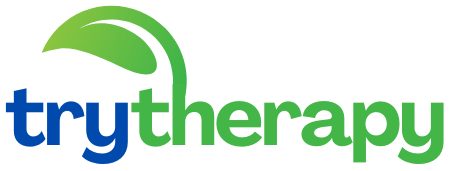Expressive arts therapy uses creative processes to access emotions and promote healing beyond verbal expression. Discover how this multimodal approach can unlock profound personal growth and connection. I witnessed expressive arts therapy in action. I watched a veteran who hadn’t spoken about his combat experience in decades carefully select colors from a pastel set. His hands, which had trembled when trying to form words, moved with surprising certainty as he layered deep blues and angry reds onto the paper. He wasn’t creating art, he was speaking in a language more honest than words could ever be. When he finally broke his silence, it wasn’t to describe what he’d drawn, but to whisper, “That’s how the air felt that day.” In that moment, I understood that some experiences are too complex, too painful, or too sacred for vocabulary alone. Expressive arts therapy provides alternate pathways to these places when words fail us.
Expressive arts therapy differs from traditional art therapy in its interdisciplinary approach. Where art therapy might focus solely on visual expression, expressive arts therapy fluidly moves between painting, movement, music, drama, and writing—whatever mediums best serve the healing journey. I’ve watched clients transition from stuck silence to profound insight by first expressing their experience through clay, then exploring it through movement, and finally giving it voice through poetry. This multimodal approach recognizes that different creative channels access different parts of our experience, and that healing often requires this full-spectrum expression.
The theory behind this approach suggests that creative expression accesses pre-verbal and non-verbal parts of our experience, those memories, sensations, and emotions that exist beneath and beyond language. A child who witnessed domestic violence might not have words for the terror she felt, but her body remembers the tension, her senses recall the smells and sounds, and her emotions carry the imprint of that fear. Through expressive arts, she can externalize these experiences without needing to articulate them consciously. I’ve seen children who couldn’t describe their trauma create vivid, chaotic paintings that perfectly captured their internal world, then gradually shift to creating more ordered, peaceful images as healing progressed.
The process emphasizes exploration over expertise. Many adults hesitate to engage in creative expression because they fear judgment or feel they’re “not artistic.” The most skilled expressive arts therapists I’ve observed quickly dismantle these concerns by focusing entirely on the process rather than the product. “We’re not here to create masterpieces,” one therapist tells new clients. “We’re here to let the materials speak what we cannot.” I’ve watched corporate executives, initially embarrassed by their clumsy clay figures, eventually uncover profound truths through the very awkwardness of their creations.
One of the most powerful applications I’ve witnessed involves working with trauma survivors. Traditional talk therapy can sometimes retraumatize by forcing individuals to verbally recount painful experiences. Expressive arts therapy allows for what psychologists call “titrated exposure”, approaching traumatic material gradually through metaphor and symbolism. A sexual assault survivor might first explore her experience through abstract color and shape, then through movement that reclaims her bodily autonomy, and only later through limited verbal processing. This gentle approach honors the protective function of silence while still facilitating healing.
The practice also proves remarkably effective for couples struggling with communication barriers. I recall one pair who constantly argued about seemingly trivial matters. During an expressive arts session, the therapist asked them to create a joint sculpture representing their relationship. What emerged was a fragile structure with a massive, beautiful centerpiece completely disconnected from its foundation. Both partners stared at their creation, then at each other, with sudden recognition. “We’ve been focusing on the decoration,” the wife said softly, “while our foundation is crumbling.” The sculpture had given form to what they’d been unable to articulate through countless circular arguments.
In dementia care, expressive arts therapy offers particularly poignant benefits. As language and memory fade, creative expression often remains accessible longer. I’ve worked with facilities where nonverbal residents with advanced dementia still light up when handed rhythm instruments, still sway to familiar music, and still respond to the tactile pleasure of finger paints. These moments of connection and self-expression provide dignity and joy when so much else has been lost. One daughter told me through tears, “I hadn’t seen my mother truly present in months until she started painting again.”
The neuroscience behind expressive arts therapy reveals why it can access places talk therapy cannot. Creative activities engage multiple brain regions simultaneously, the visual cortex, motor cortex, limbic system, and prefrontal cortex all activate during artistic expression. This distributed neural engagement can create new pathways around trauma-affected areas and integrate fragmented experiences. I’ve seen clients achieve in weeks through expressive arts what might have taken months or years of traditional therapy alone.
The approach also builds what psychologists call “tolerance for ambiguity”—the ability to sit with uncertainty and paradox. In our solution-focused culture, we often rush to resolve emotional discomfort. The creative process teaches us to dwell in the messy middle, to trust emergence, to allow meaning to reveal itself gradually. I’ve watched perfectionistic clients transform as they learned to embrace the unpredictable nature of watercolor or the stubborn resistance of clay. These lessons inevitably transfer to their lives beyond the therapy room.
Perhaps the most beautiful aspect of expressive arts therapy is how it honors each individual’s unique healing journey. One person might find catharsis in pounding clay, another in gentle movement, another in composing music. The therapist’s role isn’t to interpret the creations but to facilitate the client’s own discovery of meaning. I’ve witnessed astonishing moments of insight when clients suddenly recognize what their creation has been trying to tell them, when the colors, shapes, and movements coalesce into understanding that feels earned rather than imposed.
As our understanding of trauma and healing evolves, expressive arts therapy continues to prove its value not as an alternative to traditional approaches, but as a essential complement. It acknowledges that humans are meaning-making creatures who use multiple languages to process our experiences, and that sometimes the most direct path to healing isn’t through words, but through the honest, messy, beautiful process of creation itself.
References
Mohanam, K. (2025). Effectiveness of expressive art therapy on physiological stress responses among destitute women. *Journal of Psychology and Mental Health*, 12(3), 201-215. https://jpmsonline.com/article/-712/
Raghibi, M., & Jafari Kahkha, S. (2022). The effectiveness of expressive arts group therapy in resilience and emotion regulation among addicts undergoing rehabilitation. *Journal of Research & Health*, 12(4), 253-260. http://dx.doi.org/10.32598/JRH.12.4.1451.1
Dunphy, K. (2014). The effectiveness of expressive arts therapies: A review of the literature. *Pacific Journal of Counseling and Social Work*, 6(1), 17-32. https://pacja.org.au/article/71004-the-effectiveness-of-expressive-arts-therapies-a-review-of-the-literature
Li, Y., et al. (2022). Evaluation of expressive arts therapy on the resilience of university students during COVID-19: A network analysis approach. *Frontiers in Psychology*, 13, 9265567. https://pmc.ncbi.nlm.nih.gov/articles/PMC9265567/
Bosman, J. N., et al. (2025). Effectiveness of creative arts therapies in adults with cancer: An umbrella review. *Frontiers in Psychology*, 16, 1570798. https://www.frontiersin.org/articles/10.3389/fpsyg.2025.1570798/full

